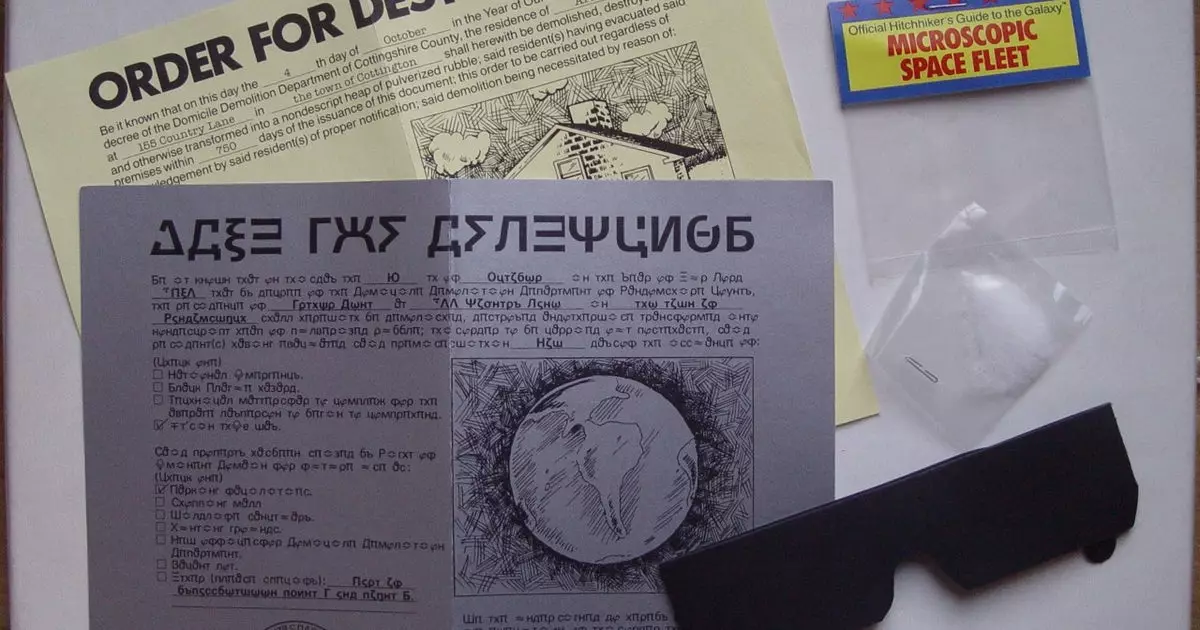In the realm of gaming history, there exists a curious treasure trove of memorabilia that evokes both nostalgia and a sense of playful absurdity. My fascination with this phenomenon began not just with the introduction of physical items accompanying video games, but with the extraordinary wisdom encapsulated in the products of the early ’80s. Infocom, a trailblazer in interactive fiction, not only birthed mesmerizing text adventures but also pioneered an innovative marketing concept: the “feelies.” These delightful extras weren’t just ornaments; they signified a deeper interaction between the gamer and the game world, offering insights that resonate even today.
These artifacts, which included everything from maps to fake passports, embodied the frenetic imagination of developers who wanted to expand the player’s experience beyond the screen. In an age where digital content is often sanitized and devoid of personal touch, these feelies stand out as quirky embodiments of a fun, carefree childhood—objects that reminded players of their adventurous spirit and the boundless creativity of game designers. There’s a heartwarming charm to a flimsy plastic bag, filled with nothing but a label proclaiming the presence of something ‘invisible.’ It is that implicit invitation to wonder that distinguishes these humble bits of cardboard and paper from the more ostentatious collectibles of today.
Human Flaws and Cosmic Humor
Take, for instance, the character of Arthur Dent from “The Hitchhiker’s Guide to the Galaxy.” Initially, I perceived Arthur as a hapless victim of circumstance, a character steeped in chaos and sarcasm—his famed portrayal by Simon Jones defined my understanding of him. However, a re-examination of Arthur through the lens of a thoughtful critique sheds light on an underlying resilience. Arthur’s quiet endurance in the face of incomprehensible chaos doesn’t merely illustrate defeat; rather, it showcases an understated form of heroism. His audacity to confront such randomness with resignation, as highlighted by insightful commentators, reveals a depth of character that transcends the farcical landscape of the universe he inhabits.
This interpretation also illustrates a broader theme in gaming and storytelling: the tension between individual agency and external chaos. Arthur’s trials serve as a metaphor for our own lives, filled with the mundane decisions we often romanticize or overlook. The universe, akin to games today, is often painted in broad strokes of expectation, but moments of human frailty are what truly define us. Such narratives remind us to embrace imperfections, to find joy even when circumstances defy logic.
The Quest for Hidden Treasures
In an era of fast-paced gaming where everything about a title is dissected and dissected again prior to release, the thrill of discovery has all but evaporated. Today’s marketing techniques often leave little to the imagination, as hype campaigns douse our unique experiences in cold anticipation and consumerist pressure. The line between genuine excitement and manufactured expectations has blurred, a development that feels inherently suffocating. Brothers and sisters of the gaming community once shared intimate moments of exploration, united by a desire to unveil the ‘hidden things’ lurking within each game. Each puzzle solved felt personal and rewarding, devoid of the modern ethos that mass-manufactures experience.
This insight resonates deeply with me, bolstering my belief in the necessity of embracing what is quaintly and unapologetically useless. Unadorned artifacts from Infocom’s earlier days challenge the contemporary trend of collectors seeking investment-worthy exquisite statuettes and intricately crafted memorabilia. The aesthetic that celebrates the peculiar and the worthless, the eccentricity of a simple piece of paper or a token item that serves no practical purpose, is needed more than ever. Such nostalgia serves as a reminder that the beauty of art often lies in its imperfections and the stories that breathe life into it.
In a gaming landscape further fragmented by commercial interests, I yearn for a revival of this ethos. It’s time to reclaim the art of the trivial—those bits of nothing that spark joy, stir memories, and ignite curiosity. The pursuit of the inconsequential—what some may dismiss as ‘tat’—is indeed a profound exploration of identity and possibility in the world of gaming. Let us champion the beautifully useless and rediscover the magic hidden in the mundane.


Leave a Reply